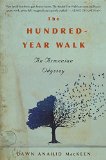Summary | Excerpt | Reading Guide | Reviews | Read-Alikes | Genres & Themes | Author Bio

A True Story of Survival
by Dean KingA spectacular true odyssey through the extremes of the Sahara Desert in the early 19th century. Reader and protagonist alike are challenged into new ways of understanding culture clash, slavery and the place of Islam in the social fabric of desert-dwelling peoples.
In a calm May morning in 1815, Captain James Riley and the crew of the Commerce left port in Connecticut for an ordinary trading voyage. They could never have imagined what awaited them.
Their nightmare began with a dreadful shipwreck off the coast of Africa, a hair-raising confrontation with hostile native tribesmen within hours of being washed ashore, and a hellish confinement in a rickety longboat as they tried, without success, to escape the fearsome coast. Eventually captured by desert nomads and sold into slavery, Riley and his men were dragged along on an insane journey through the bone-dry heart of the Sahara--a region unknown to Westerners. Along the way the Americans would encounter everything that could possibly test them: barbarism, murder, starvation, plagues of locusts, death, sandstorms that lasted for days, dehydration, and hostile tribes that roamed the desert on armies of camels. They would discover ancient cities and secret oases. They would also discover a surprising bond between a Muslim trader and an American sea captain, men who began as strangers, were forced to become allies in order to survive, and, in the tempering heat of the desert, became friends-even as the captain hatched a daring betrayal in order to save his men.
From the cold waters of the Atlantic to the searing Saharan sands, Skeletons on the Zahara is a spectacular odyssey through the extremes. Destined to become a classic among adventure narratives, Dean King's masterpiece is an unforgettable tale of survival, courage, and brotherhood.
 Charles Slack, author of Noble Obsession
This incredibly true tale exposes its band of shipwrecked Americans to the most extreme tests of cruelty, savagery, and their own will to survive. Best of all, though, are the sweet notes of nobility and kindness that transcend culture, language, and the burning sands.
Charles Slack, author of Noble Obsession
This incredibly true tale exposes its band of shipwrecked Americans to the most extreme tests of cruelty, savagery, and their own will to survive. Best of all, though, are the sweet notes of nobility and kindness that transcend culture, language, and the burning sands. David L. Robbins, author of Last Citadel
A narrative of chilling miseries and harrowing adventure, Dean King's telling leaves nothing unexplored in the slavery and rescue of American sailors on the blasted sands of the Sahara. The unbelievable is made believable, and the incomprehensible as glaring as the desert sun.
David L. Robbins, author of Last Citadel
A narrative of chilling miseries and harrowing adventure, Dean King's telling leaves nothing unexplored in the slavery and rescue of American sailors on the blasted sands of the Sahara. The unbelievable is made believable, and the incomprehensible as glaring as the desert sun. Doug Stanton, author of In Harm's Way
Skeletons of the Zahara is an amazing, mind-boggling story of courage and endurance, rivaling Shackleton's drama and surpassing Krakauer's climb on Everest. This is history boldly told with a novelist's eye for the scorching detail.
Doug Stanton, author of In Harm's Way
Skeletons of the Zahara is an amazing, mind-boggling story of courage and endurance, rivaling Shackleton's drama and surpassing Krakauer's climb on Everest. This is history boldly told with a novelist's eye for the scorching detail. Dr. D. J. Ratcliffe, Emeritus Reader, History Department, University of Durham
A grand book.
Dr. D. J. Ratcliffe, Emeritus Reader, History Department, University of Durham
A grand book. Nathaniel Philbrick, author of In the Heart of the Sea and Sea of Glory
Dean King has brought to life one of the great, true-life adventure stories--a riveting tale of suffering and redemption.
Nathaniel Philbrick, author of In the Heart of the Sea and Sea of Glory
Dean King has brought to life one of the great, true-life adventure stories--a riveting tale of suffering and redemption.
If you liked Skeletons on the Zahara, try these:

by Dawn Anahid MacKeen
Published 2017
An epic tale of one man's courage in the face of genocide and his granddaughter's quest to tell his story.

by Lawrence Osborne
Published 2013
In this stylish, haunting novel, journalist and novelist Lawrence Osborne explores the reverberations of a random accident on the lives of Moroccan Muslims and Western visitors who converge on a luxurious desert villa for a decadent weekend-long party.
Outside of a dog, a book is man's best friend. Inside of a dog it's too dark to read.
Click Here to find out who said this, as well as discovering other famous literary quotes!